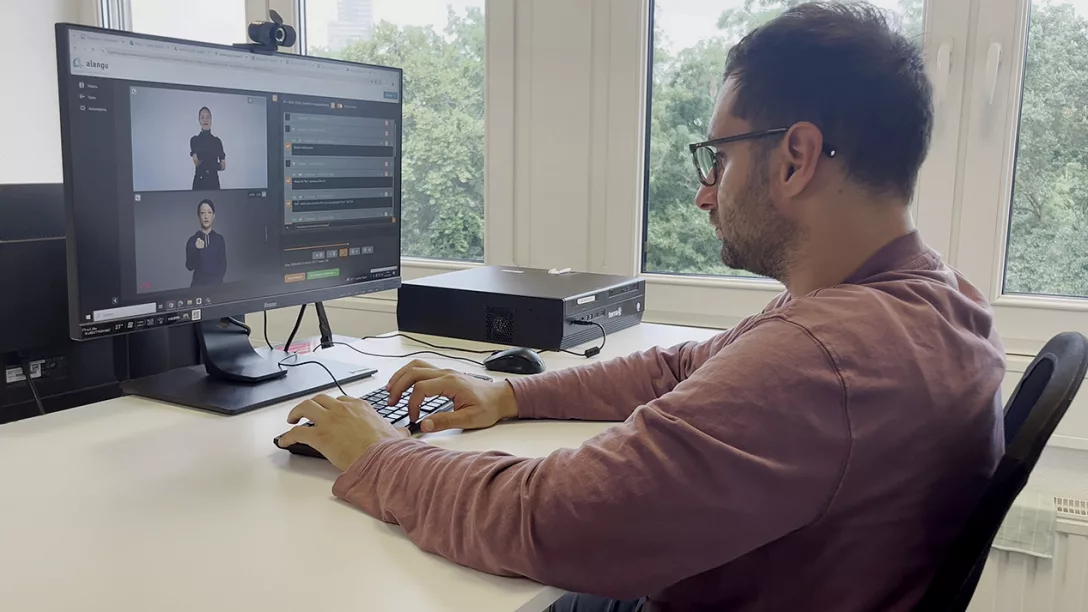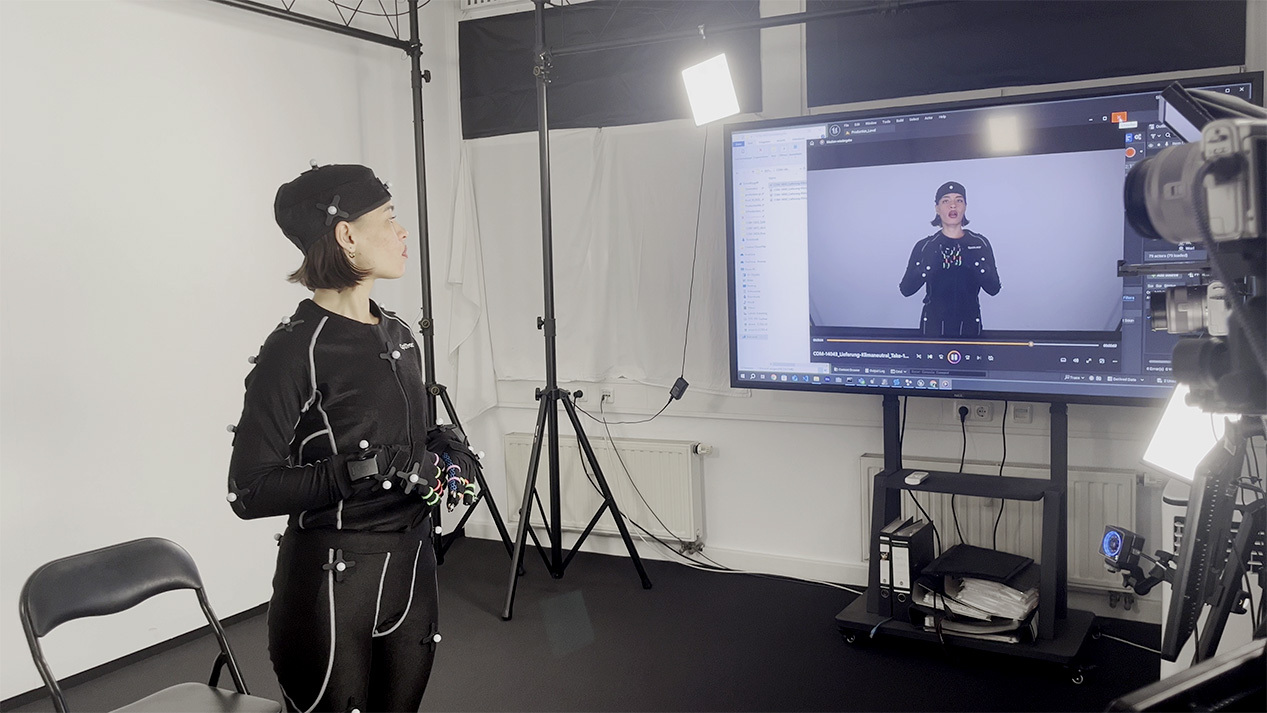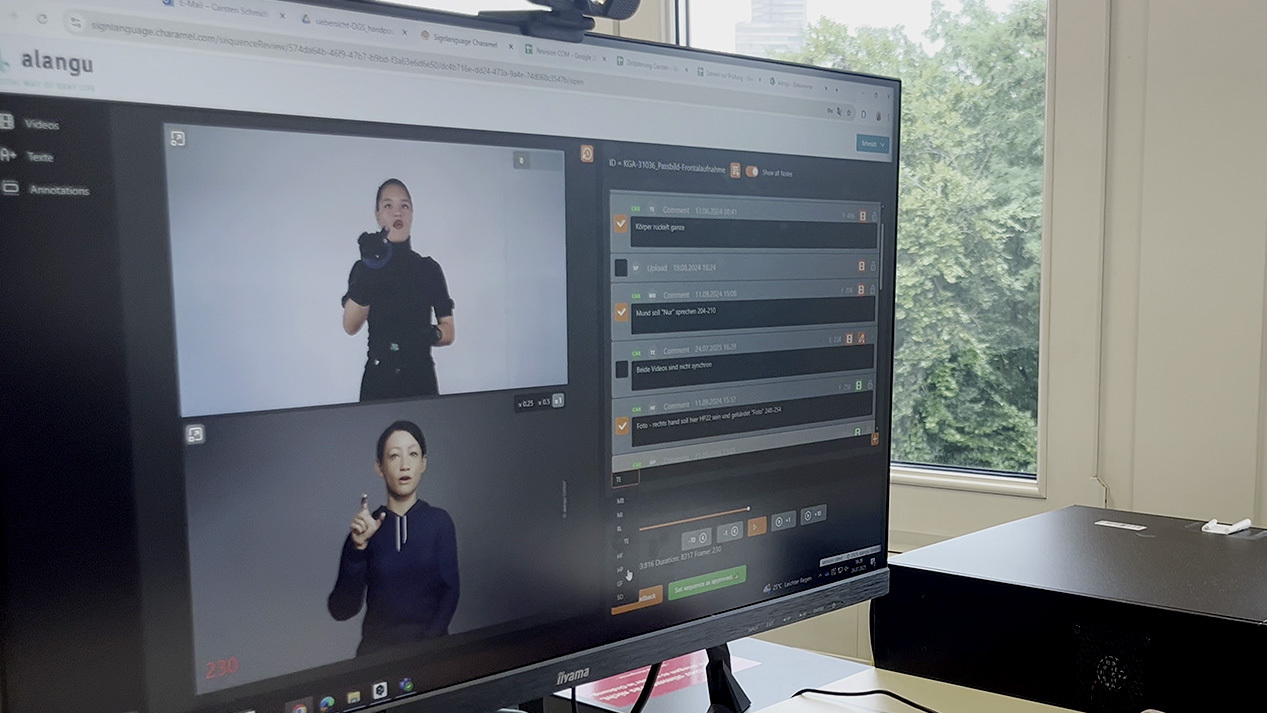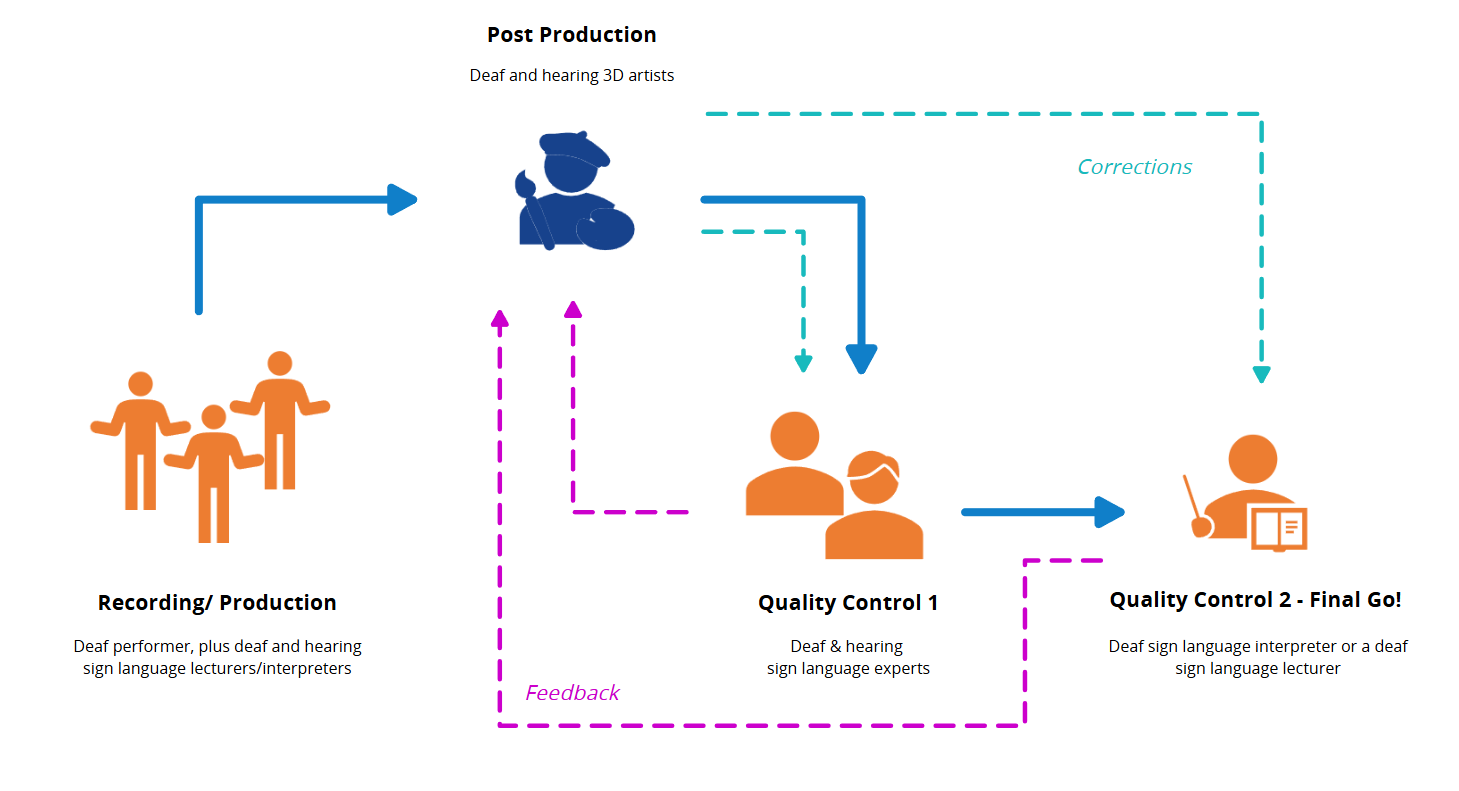How does quality assurance work at alangu?

Why quality assurance is our top priority
In sign language, even the smallest deviations in hand shapes or facial expressions can significantly affect meaning and comprehension. That’s why it’s so important to us that every animation in our database meets the highest standards and can be understood by everyone. At alangu, we have developed a clearly structured, multi-stage quality assurance process that is applied consistently in every production.
Different Perspectives
The process already begins during recording. Our team usually consists of three people:
- a performer, for example a deaf interpreter or sign language lecturer
- a hearing interpreter
- a native speaker of German Sign Language (DGS)
This way, different experiences and perspectives flow into the production. For example: A sentence that might be clear to a hearing interpreter could be too complicated for a deaf native speaker who is used to everyday language. That’s why the prepared translations are often revised several times within the team. After each take, the video material is reviewed together. Only if everyone is satisfied will the recording be accepted – otherwise, it’s time for another take!

Once the recording is completed, post-production begins: here, technical inaccuracies are meticulously corrected, and the animation curves are refined by our deaf and hearing 3D artists.
Standardized Revision Process
The edited animations are examined in detail by our deaf sign language experts. If an inconsistency is noticed – whether it’s an incorrect hand position or an unclear mouth movement – it is recorded. Using our revision tool, the issue can be marked frame by frame and annotated with comments, videos, and even drawings. This ensures that the feedback is passed on to the 3D artists in a clear way and corrections can be implemented precisely.

Corrections are carried out iteratively in several revision loops. Only when all issues have been resolved is the final version approved and published.
This way, we make sure that each animation not only meets technical standards but is also fully understandable and aligns with alangu’s high quality requirements. With this level of precision, we aim to build trust in our avatars and provide real added value for accessible communication.

We want our avatars to set new standards – that’s why we continuously improve our processes and work to optimize the interaction between technology and linguistic expertise.
This glimpse only shows part of our work – we’d be happy to answer your questions or share more about the process. Follow our Instagram channel @gebaerdensprachavatar to stay up to date!
Also interesting:
How Is a Sign Language Video Created?
How do we teach our AI sign language?